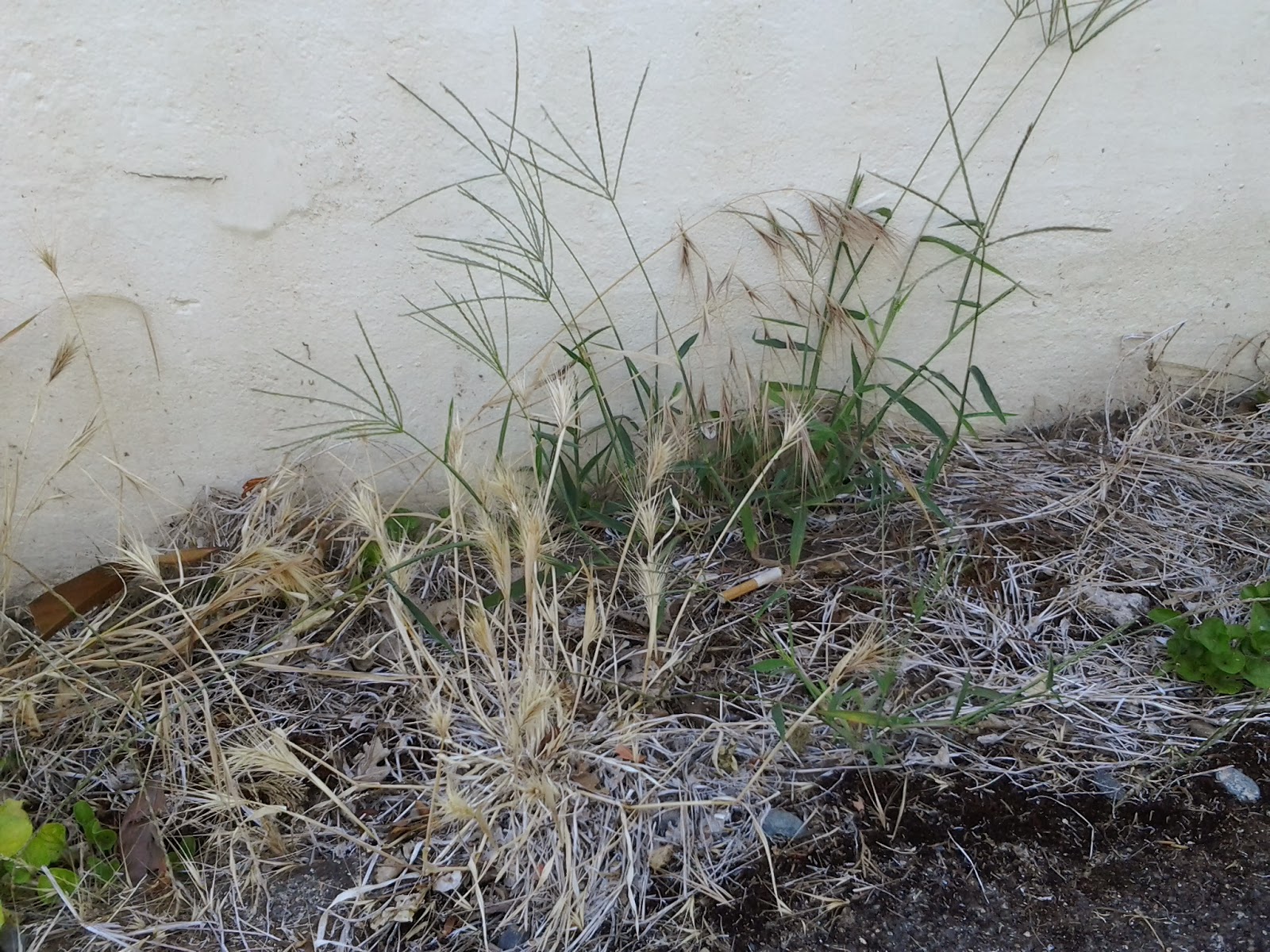Spring has sprung with a
vengeance. Foxtails are already putting
up seeds stalks. Sprouting crab grass
cannot be far behind. It’s time to mulch
your lawn.
Sprouting crab grass in bare soil. The leaves are not only fat, but fuzzy.
Last
year, I started mulching crab grass in Dad’s lawn when it started sprouting,
which was a bit late for the amount of mulch I was using, an inch of
compost. Sprouting crab grass is very
small, and can be hard to see before it gets big enough to grow out of the
mulch. Not that the effort was wasted;
the compost still stopped a lot of crab grass, and the lawn is looking much
healthier and greener than last spring, without moss under the tree.
The fuzziness of young crab grass leaves shows better in this young plant.
Even
though it is early March, lawns are growing and being mowed. Lawn grasses can readily grow through an inch
of compost and will be much happier for it.
If your grass is perennial rye, a clumping grass, it’s a good time to
seed it into the compost where it is patchy.
Dad’s lawn is mainly fine fescue, a rhizomatous grass, and white Dutch
clover, both of which fill in when given sufficient organic matter, nutrients
and neutral soil. I also spread blood
meal and ashes, bringing up the nitrogen, iron, and Ph to help kill the moss
and feed the grass.
This young mature crab grass is growing in what looks like well-mowed Bermuda grass before its bloom.
Crab
grass is a clumping relative of Bermuda grass that also roots along its stems,
but it’s tender, and dies with the first frost.
It is a tender perennial, as it does not die from making seed, but only
spreads and makes more seed until it freezes.
It roots deeply where it is well watered, and hardly roots at all where
it is not watered well, living on dust and dew collected on its hairy
leaves.
Bermuda grows rhizomes that can
travel under sidewalks and go 18” deep and goes dormant about 6 months of the
year in Oregon, making it a lawn weed, not good grass. Bermuda and crab grass show their family
relationship in the shape of their seed stalks, and the size of their seed,
which is, thankfully, small and easily smothered with mulch. So the same mulching that stops crab grass
can also prevent Bermuda from germinating.
Ironically, in Arizona, where they
use Bermuda as lawn grass, they mulch their lawns with steer manure every
spring, which keeps them thick and green in the summer heat, and crab grass is
rare. Here in southern Oregon, I don’t
recall seeing anyone else using steer manure or other compost on their lawns,
and crab grass has spread all over town and down our country roads in the last
20 years. Chemical fertilizers don’t
smother weed seeds.
Green, mature crab grass with dry, seeded foxtails and cheat in dry ground. Crab grass, being a perennial, is not a fire hazard like the other two as it stays green and growing until frost.
Even if you mulch, it is unlikely
that you will stop all the crab grass in your lawn, since the seed is everywhere. Unlike annual grasses, the roots of crab
grass are tough and wiry, and where they go deep, it is nearly impossible to
pull after it flowers. But it can be cut
off its roots with Kengyu garden scissors, and it won’t grow back, as it has no
food in those wiry roots.
It doesn't pay to spray crab grass with Roundup (glyphosate salts). It kills the plant, but fertilizes the seed in the soil; it comes back greener every time until you spray so much, so frequently that you over-fertilize.




No comments:
Post a Comment
Please feel free to comment.